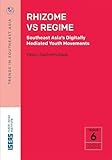Rhizome vs Regime : Southeast Asia’s Digitally Mediated Youth Movements / Yatun Sastramidjaja.
Material type: TextPublisher: Singapore : ISEAS Publishing, [2023]Copyright date: ©2023Description: 1 online resource (36 p.)Content type:
TextPublisher: Singapore : ISEAS Publishing, [2023]Copyright date: ©2023Description: 1 online resource (36 p.)Content type: - 9789815104219
- online - DeGruyter
| Item type | Current library | Call number | URL | Status | Notes | Barcode | |
|---|---|---|---|---|---|---|---|
 eBook
eBook
|
Biblioteca "Angelicum" Pont. Univ. S.Tommaso d'Aquino Nuvola online | online - DeGruyter (Browse shelf(Opens below)) | Online access | Not for loan (Accesso limitato) | Accesso per gli utenti autorizzati / Access for authorized users | (dgr)9789815104219 |
Frontmatter -- FOREWORD -- EXECUTIVE SUMMARY -- INTRODUCTION -- CONNECTIVITY: YOUTH PROTEST AND DIGITAL MEDIATION -- HETEROGENEITY: THE CASE OF INDONESIA -- MULTIPLICITY: “BE WATER” IN HONG KONG, THAILAND AND MYANMAR -- CYBER-REPRESSION AND RESILIENCE
restricted access online access with authorization star
http://purl.org/coar/access_right/c_16ec
In Indonesia, Thailand and Myanmar, democratic regression and the reconsolidation of authoritarian regimes have triggered the rise of social media-driven protest movements. These are pioneered by a new generation of activist youth, distinguishing themselves from previous student and youth movements by the digitally mediated, decentralized and diverse nature of their protest. While experimenting with digitally mediated repertoires of action adopted and adapted from similar struggles elsewhere, these protesters forge transnational links that give rise to new protest assemblages across and beyond the region. This is exemplified by the social media-based #MilkTeaAlliance, in which the distinct protests in Indonesia, Thailand, Myanmar and other countries are conjoined through extended solidarity and affinity ties in a common “generational” struggle against entrenched authoritarianism. The youth resistance in Hong Kong was instrumental in driving this trend. Like a “rhizome” (Deleuze and Guattari 1987), these movements are characterized by connectivity, heterogeneity, multiplicity and “unbreakable” expansion. This allows for a fluid participation of various activist and non-activist groups (such as K-poppers) and the inclusion of various issues and demands in the protest, which merge into the cause of fighting systemic injustice. It also heightens the movements’ viability and resilience to repression. However, besides physical repression, protesters in all three countries face the added challenge of new modes of cyber-repression. The combined effect of repressive cyber laws, intrusive cyber surveillance and aggressive cyber troops took its toll on the protest movements’ capacities for online agitation and mobilization, thus contributing to the movements’ silencing and suppression. Yet, the resistance did not die out, as activists dodge cyber-repression and make creative uses of digital media and technologies to cultivate their resistance online, at the grassroots level, or in the cultural sphere. Meanwhile, as long as authorities remain repressive and tone-deaf to this generation’s criticism and concerns, the gulf between them looks set to widen. The longer-term implication is that this generation will remain alienated and continue to express their struggle in novel and unpredictable ways.
Mode of access: Internet via World Wide Web.
In English.
Description based on online resource; title from PDF title page (publisher's Web site, viewed 06. Mrz 2024)


